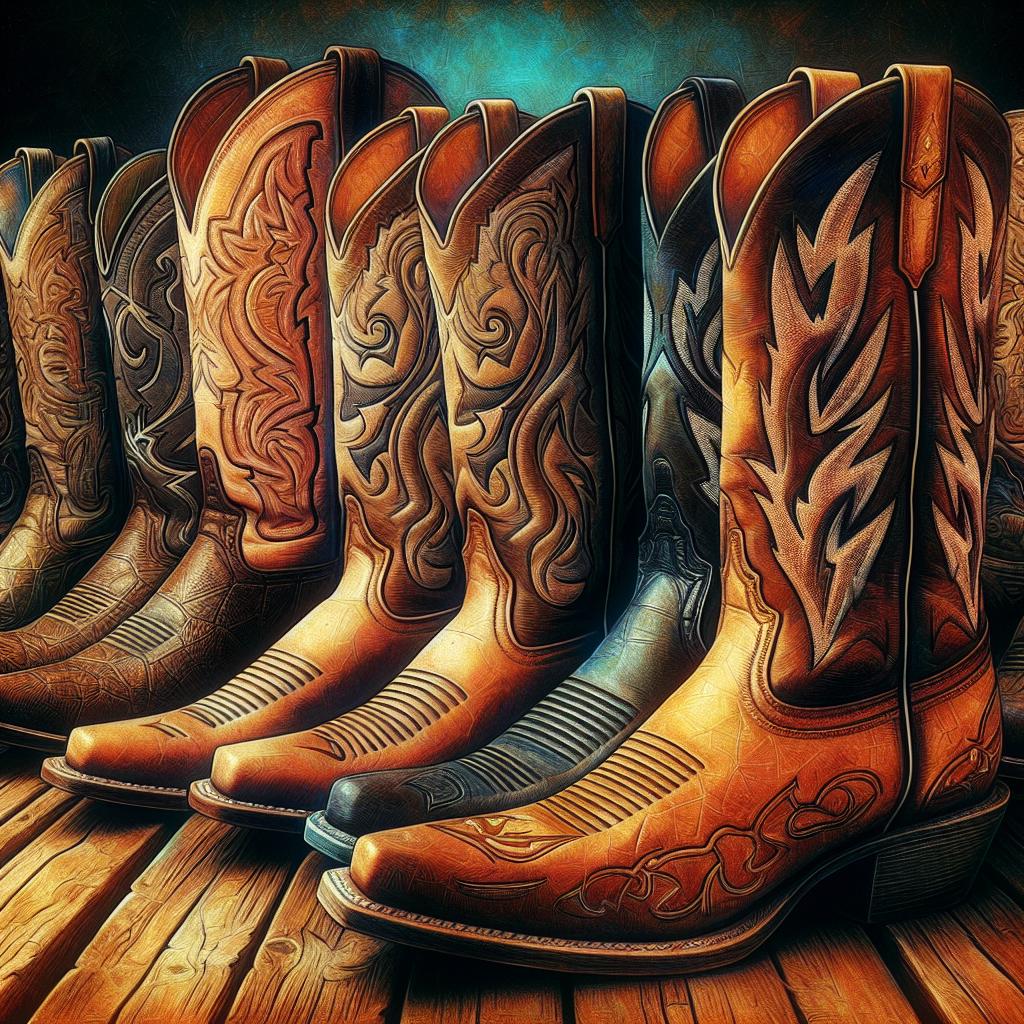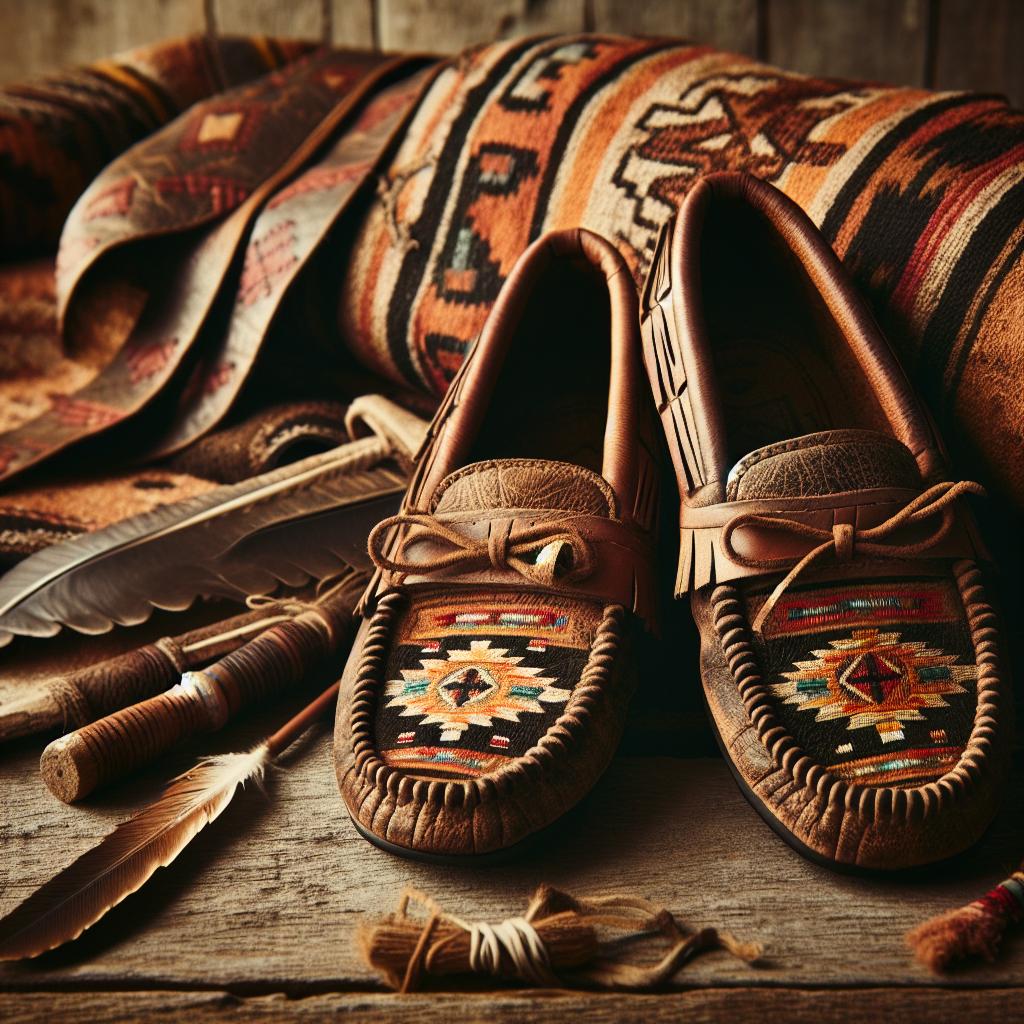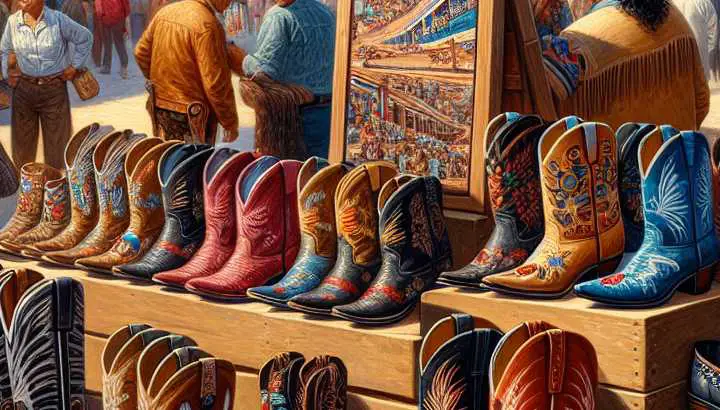Unique Footwear Styles of the Southwest

Cowboy boots: A quintessential Southwestern footwear style
Once upon a time in the wild, wild West, a sturdy, distinct, and rugged footwear emerged, making its mark on the sands of time. These were not your average pair of shoes or fancy high-heeled loafers. No, sir! They were far more robust and culturally essential. We’re talking about a style icon, a symbol of grit and determination, and the optimal hip and ankle support – the quintessential cowboy boot, the Godfather of all Southwestern footwear.
When you think cowboy boots, the first image that leaps to your mind is an iron-willed Sheriff, tipping his hat in a dusty old town square, silver spurs glinting in the blazing sun while he saunters off towards the saloon. Does it get any cooler? I reckon not.
The cowboy boot story begins with the unsung heroes of the West—the vaqueros. These Mexican cowboys amalgamated their rugged lifestyle and the rough terrains of the Southwest to conceive these beauties. The early cowboy boots were a no-nonsense affair—simply designed and meticulously built for the heavy-duty outdoors. It was all about survival and functionality, folks. The high shafts protected valiant legs from thorny bushes and snake attacks (because yes, that was an average day for them!), and the angled heels anchored the foot securely in the stirrups.
Even though cowboy boots stick to their roots (get it? boots-root?), they aren’t averse to a little disco now and then. When the Hollywood Western glamorized the cowboy culture, these boots went from essential gear to fashion statements faster than a rattlesnake’s bite. Suddenly, cowboy boots were splashed with intricate embroidery, adorned with precious stones, carved with unique patterning, and even came in exotic skins. From rattlesnake to ostrich, from glitz and glam to macho extravaganza, these boots said it all without uttering a word.
“”One of Powell’s people, a sort of shepherd, or cowboy, chanced to be coming into the park; and with a little cross-questioning I got out of him, both the fact of his master’s absence, and the whereabouts.””
~ Mayne Reid, No Quarter!
Today, you don’t need to be in a spaghetti western or own a ranch to strut around in a badass pair of cowboy boots. Rock them with skinny jeans or sundresses, at music festivals or BBQ gatherings, these boots prove their versatility time and time again like a Swiss Army knife of style. They are the silent protagonists in the game of fashion, effortlessly imparting a ‘devil-may-care’ attitude to all who dare to don them.
Despite their Hollywood glam and contemporary adaptations, cowboy boots haven’t lost their practical appeal though. If you find yourself riding off into the sunset, these boots still give you the sturdiness and traction that sent the early cowboy cavorting through rough terrains. The phrase ‘all hat and no cattle’ certainly doesn’t apply to cowboy boots.
Whether you’re wrestling a steer or busting a move on the dancefloor, cowboy boots are the Southwest’s pride and joy. And why wouldn’t they be? They are a testament to ingenuity and practicality, yet they have maintained their style and flair throughout history. There’s something poetic about that, almost mirroring life in the Southwest itself.
To cap it off, let’s give credit where credit’s due. Dear cowboy boots, we salute you. You’re the ultimate fashion mercenary, providing comfort and durability, while still managing to look like a million bucks. And as much as things change, we hope you’ll keep riding high in your saddle, continuing to be the quintessential Southwestern footwear style that has stolen our hearts and feet.
Read More: Cowboy Boots: A Quintessential Southwestern Footwear Style

The cultural significance of moccasins in the Southwest
Title: A Sole-ful Journey: The Cultural Significance of Moccasins in the Southwest
Ah, moccasins. They’re like the bread and butter to the cultural thali of the Southwest, the Levis of the Wild Wild West, the, umm…bare feet to a Sonoran Desert night. Now, you may think of moccasins as a flash in the pan trend when the boho-chic phase rocked the fashion universe – feathers, fringes, and all. However, in reality, these foot-huggers hold a profound history and deep cultural significance in the indigenous communities of the American Southwest.
Anyhoo, let’s mosey our way into the enchanting, colorful world of moccasins, shall we? Ooo, and look, here comes the history wagon!
History, in its essence, is kind of like a seasoned, old rancher. It’s full of riveting tales, some grueling challenges, and a strong sense of identity and culture. Now, our dear moccasins originate, not from some fancy shoe designer with a French sentence for a name but from the hardworking, resilient Native American tribes of the Southwest United States.
Traditionally crafted by the nimble hands of local artisans, moccasins served both as protective footwear and a medium to express individual tribal identity. They were the trailblazing Twitter handles of their epoch, telling the world which tribe, family, or status you belonged to with their distinct motifs and designs. Need a visual? Imagine strutting down a dusty Southwest trail in a pair of red-deer skin moccasins, detailed with turquoise bead-work, representing your tribal emblem—talk about making a fashion statement, eh?
Each moccasin was lovingly fashioned from nature’s grocery store, using materials like tanned leather from elk, buffalo, or deer, stitched together with plant fibres or animal sinew.
“Her appealing eyes and tender baby ways wound themselves around the heartstrings of the squaws, and they vied with each other in making dainty moccasins for her little pink feet”
~ Mary
Virginia Wall, Virginia Dare
Some tribes used rabbit fur for warmth, while others added sturdy buffalo hide soles for durability (imagine that, Timberland!).
Now, strumming through to the cultural essence. Hold onto your cowboy hats (or feathered headbands), ladies and gents, because it’s about to get interesting! The cultural significance of moccasins extends beyond style and survival. They also play a crucial role in the spiritual, ceremonial, and social life of Native American tribes.
In many Pueblo and Hopi ceremonies, distinct knee-high moccasins called ‘leggings,’ are worn during rites of passage by young boys. Likewise, among the Navajo, specially created wedding moccasins symbolize good luck and prosperity for the newlywed couple. Considering how expensive designer wedding shoes tend to be, culturally-rich, handmade moccasins are not just practical but are an absolute steal!
The fabulous, heartfelt world of moccasins is certainly no laughing matter. Yet, we approach it with a jolly heart because understanding another culture should always be a spirited, joyous journey, just like a jaunt in a comfortable pair of moccasins, bouncing rhythmically along the crimson sands of the Southwest, beneath the endless sky. Pretty sole-ful, huh?
So, let’s strap on those moccasins, tip our cowboy hats to the tribal past, and saunter into the sunset, filled with newfound respect for this emblem of Indigenous enduring identity.
Read More: The Cultural Significance Of Moccasins In The Southwest
